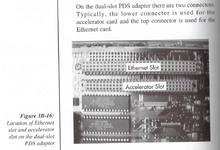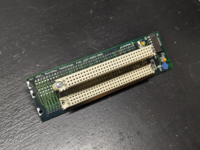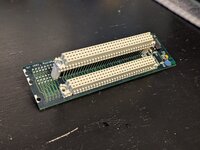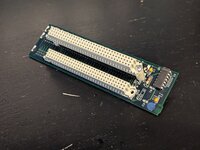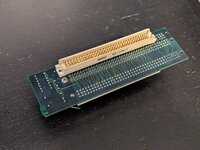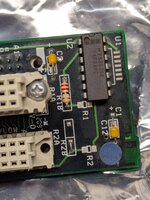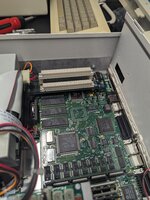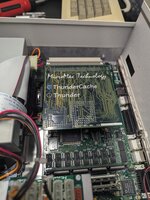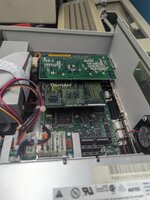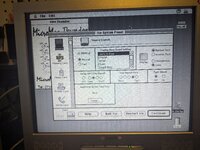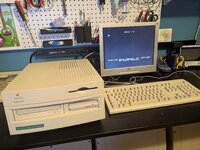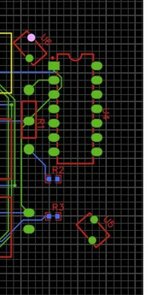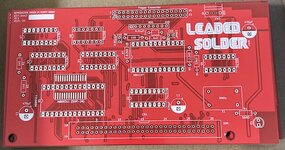I was talking to some much more knowledgeable people than myself (zigzagjoe and
@max1zzz) about this dual-slot PDS adapter, and they both suggested simulating a completely passive adapter by installing a passthrough on a cheap LC PDS ethernet card and stacking an accelerator on top of it. In fact, I believe
@max1zzz did exactly that with an Interware Booster clone while developing his
accelerator/ethernet combo card. So, I installed a passthrough on this Farallon card I had laying around:
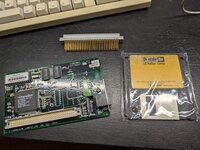
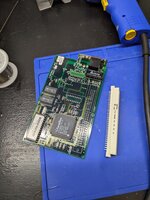
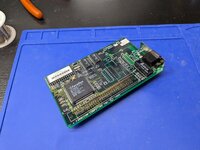
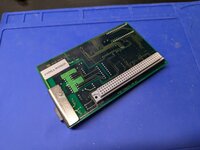
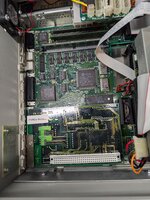
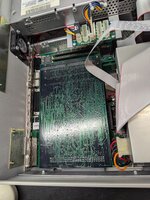
After modification, the ethernet card still worked and passed all diagnostics without an accelerator installed, and all of my soldering looked good under magnification. These are the two LCII accelerators I own:
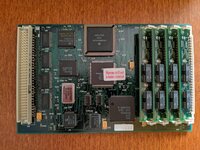
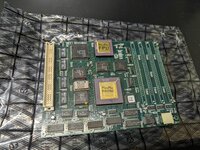
With either of these accelerators installed on top of the ethernet card, the accelerator works, but the machine doesn't see the ethernet card at all. With the first accelerator installed, Tattletech shows this in slot $0E (same as it shows with only that accelerator installed):
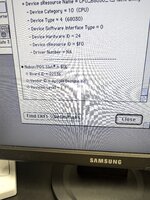
So that accelerator presents a DeclROM apparently. With the MicroMac accelerator installed, slot $0E shows as empty:
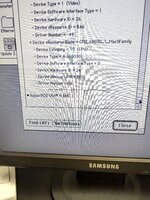
With only the ethernet card installed:

So maybe it has to do with the relative complexity of these accelerators compared to some of the simpler ones that just add a faster 030 and an FPU. I also just now noticed this blurb on
MicroMac's site for the Power Workstation:
...includes a specially modified MicroMac ThunderCache accelerator with a dual-slot PDS adapter...
I wonder if those "special" modifications are what allow that accelerator to recognize an additional PDS card with a purely passive dual-slot PDS adapter? If so, then finding one of the adapters wouldn't be much use without a specific accelerator that works with it. Actually analyzing the bus activity of these two accelerators to try to figure out what's preventing them from seeing a PDS card is probably beyond me, and even if it weren't, I'm probably not interested in REing/modifying either of them to work in this configuration. I would be interested in plugging a simpler accelerator like a Booster 30 clone or a MMXL99 into this modified ethernet card to see if they work with it, but I don't have either of those. That would just be a curiosity though, as I don't want to sacrifice the extra RAM these accelerators provide.
Of course, none of this is very practical since I could just put a wifi BlueSCSI in this thing instead of a physical ethernet card, but then using 30-40yr old computers is already a bit impractical. That's what makes it fun

